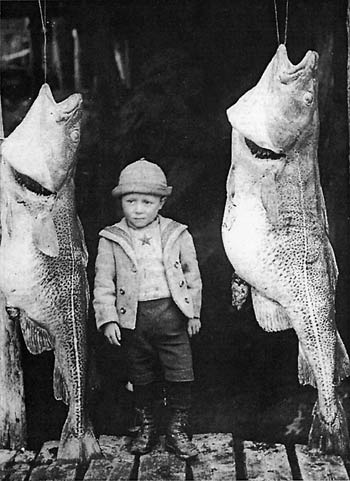
Trading across medieval Europe revealed in cod bones more than a metre in length.
The catastrophic decline of North Sea cod as the result of over fishing has had an impact on all our menus, from the poshest restaurants to the corner chippie: the fish left are few and small, compared with those of less than a century ago. Cod more than a metre in length are rare these days, whereas archaeological remains show that fish several times that size were common.
A new study shows that cod were exploited in the Middle Ages from many, often distant, fishing grounds, with an international trade in dried stockfish. Some fish eaten in a Yorkshire village may have been some from off the coast of Sweden, while merchants in what is now northern Germany ate cod from Arctic Norway.
Co-operation by archaeologists and scientists from Britain, France, Belgium, Germany, Scandinavia and the Baltic states has allowed medieval cod bones recovered from sites as far apart as Poland and Orkney to be analysed for their stable-isotope content. Variation in the isotopes of carbon and nitrogen is regional, “making it possible to identify bones from cod caught in distant waters”, James Barrett and colleagues report in the Journal of Archaeological Science. Their work suggests that this long-distance fish trade had already begun by late Anglo-Saxon times, at the end of the first millennium AD.
Consumption of marine fish such as cod went up sharply about AD1000 in parts of Northern and Western Europe, but until now it was not clear how much this was relatively local fishing, and how much the result of organised long-distance trade. The distinction is important, the team say, because “the emergence of commercial fishing represents a watershed in the intensity of human use of the sea. It is central to an understanding of economic history”.
The study selected skull bones from archaeological sites that were probably fisheries, because traded dried fish are usually decapitated as well as gutted. These were used as control samples.
“Target samples” were bones bearing butchery marks, often vertebrae or the paired cleithra behind the skull which often remain on dried or smoked fish such as kippers.
The control samples from northern Norwegian sites came from Arctic fisheries, unsurprisingly, while those from Orkney were from the northern North Sea and those from eastern England and Belgium came from farther south. Danish samples were from the Kattegat between Denmark and Sweden, and Polish ones from the eastern Baltic. In every case the nearest significant fishing zone was the one exploited.
Some of the target samples showed a similar pattern, but one of two from Wharram Percy, a deserted medieval village on the Yorkshire Wolds, seem to have come from the Kattegat and not the North Sea, while most of those from the western Baltic trading community of Haithabu or Hedeby, near the eastern end of the Kiel Canal across the base of the Jutland peninsula, seem to have come from Arctic Norway and not the Baltic fisheries.
Stable-isotope analysis of fish remains “has the potential to revolutionise our understanding of the origins and growth of commercial fishing in northern Europe, freeing it from the limits of an incomplete historical record”, the team says. Although fisheries farther afield, such as the later Basque exploitation of those off Labrador in northeastern Canada, are not included in the present project, it may help to rewrite the history of North Atlantic as well as North Sea commerce in the second millennium.
From: Timesonline.co.uk


No comments:
Post a Comment